#air tribe
Text
My review of ATLA Live Action episode one:
(Keep in mind, at this point I have only seen episode 1 and so this is just my first impression)

Remember, there are spoilers ahead and I seriously think you should watch it yourself before reading any review. Trust me, having your own impression first before anyone else's is way better... Okay here we go:
-----
Review of episode one, first impressions:
I really loved how we got to see what the air temple genocide looked like. It really shows that they're fully aware that the main audience has grown up. I watched it with my sister, her hubby, and my 5-yr niece and we didn't know that it would literally show people getting burned alive, so we had to cover her eyes a lot lol. I loved how we got to see firelord Sozin when he was first declaring war.
I really liked how we got to see monk Gyatsu (having that name in 2024 is sure rough buddy..) actually want Aang to have a childhood before they told him he's the avatar. The bending looks really cool, not slow and cringey like in the first live action movie haha. I thought the way that one air-bender died, the woman doing the air tornado, was fricken BRUTAL. And it's great to see just how far they're going with the onscreen death.
My brother-in-law (sister's hubby) felt really iffy on the fact that Aang can just sort of fly on his own now, without his glider thing. I honestly don't mind it, I don't think it really affects the story all that much. And it also just.. makes sense, for an air-bender to be able to fly on their own.
I love how they got the grandma to say the original intro from the cartoon in a natural way as an explanation to Aang.
I liked how they kept the original motifs. The fire tribe still has that classic "BUM bum bUm baaaaam" idk how else to describe it haha
Aang:
I thought his acting was pretty good for a kid. The crying parts were decent at best... but obviously I don't expect a kid to be great at faking tears. I thought his acting was great when he learned that he was the avatar, just that silent panic, the breathing getting faster and darting the eyes. The scene where he closed himself in the ice ball thing looked really cool.
(My brother-in-law was fanboying the whole time, so much so that my niece started imitating him by saying "O M G the acting is SO good!" which made us all laugh, she didn't have ill-intent, she was just learning by example)
Katara:
Her acting was a little iffy to me, I have hope that it'll improve later on. She had good lines but her face just didn't make me believe those lines. During emotional moments she was just kinda '_'
But I know how tough it is to be a child actor so I'll give her the benefit of the doubt. (And to be fair, it is hard to convey emotion as good as a cartoon can) Her water bending looked really pretty, and I love that they kept her hair loopies. And I love that she still has her motherly personality like when she was comforting Aang near the end.
Sokka:
Again, I thought his acting was pretty decent, child actors and whatnot. I really love how they didn't just reuse the same jokes from the cartoon and got original. My favorite two jokes were when it cut to him screaming on Appa, and when Aang said that he had to save the world and Sokka's response was like "Gee, is that all?" sarcastically, got a good laugh outta me. I love how his weapon looked exactly like the one in the cartoon. And I love how he got to have a one-on-one stand off with Zuko.
Haven't seen Momo yet, gonna be a bit disappointed if we don't but I mean.... Now that I think about it, Momo didn't really add anything. He was just kinda there in the cartoon for comedic affect...
Anyway, just in case someone is reading this before watching it, I'm not gonna spoil/talk about anything else (like Zuko and Iroh). So please go get your own impressions of it, even if you have to watch it on a pirated site.
Thanks for reading :)
(Side note, I do wish they chose tanner actors for the water tribe but eh, what the hell do I know? Could just be the lighting that's making them look pale)
Edit: So I just found out that Sokka and Katara's actors are not children lol (well, Karata's is 17 but that's almost an adult) so it is now a little less excusable.... But whatever, it's okay.
#avatar the last airbender live action#atla#live action#netflix#the better live action#aang#avatar#airbender#katara#water tribe#sokka#nickelodeon#fire tribe#air tribe#earth tribe
2 notes
·
View notes
Text


Handprint
#atla#avatar the last airbender#zuko#katara#zutara#atla art#atla fanart#zuko fanart#zuko art#katara art#katara fanart#atla zuko#atla katara#katara of the southern water tribe#prince zuko#zuko x katara#katara x zuko#Western Air Temple#zutara art#zutara fanart#avatar#She figures it out on her own#And Agni it hurts#Who's up for killing papa Ozai?#fire lord ozai#This is one of my favorite ZK headcanons of all times. Katara just... putting the pieces together and figuring out what happened to Zuko.#It's a different kind of angst#Zuko's scar having the shape of Ozai's hand is heartwrenching. I get why some people describe it as a comet and whatnot. But a Handprint...#The visual metaphor...#Agni help Ozai 'cause I fucking won't
18K notes
·
View notes
Text

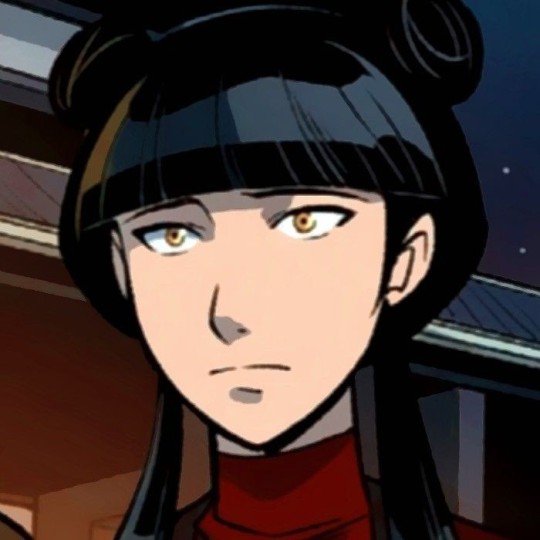

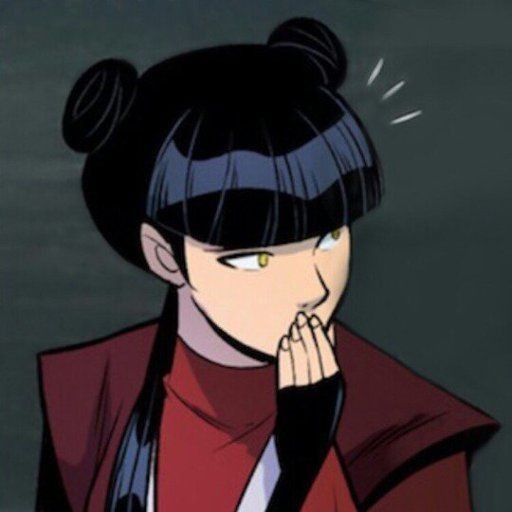
Can we appreciate comics Mai😌
#avatar the last airbender#atla#atla netflix#netflix atla#uncle iroh#zutara#kataang#maiko#aang#katara#sokka#toph#atla suki#zuko#mai atla#azula#ty lee#aesthetic#icons#air nomads#water tribe#earth kingdom#fire nation
2K notes
·
View notes
Text
Cultural Practices: Pai Sho - The Game
I'm honestly a little embarrassed it took me this long to get to this topic! As always, credit goes to @atla-lore-archive for saving all the neat ATLA tidbits and concept art from the old Nick website.
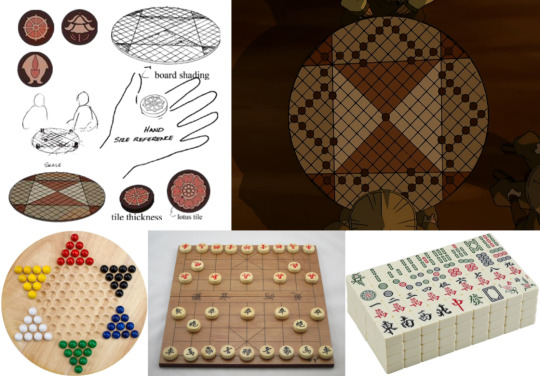
Pai Sho (牌數), meaning "several game pieces" in Chinese, takes inspiration from a few different table games:
Its most obvious influence is the German game Sternhalma, known in the English-speaking world as Chinese Checkers. Like Chinese Checkers, the game is played on a circular board.
The lines on the board and the circular tiles are reminiscent of Xiàngqí (象棋), known in the English-speaking world as Chinese Chess. The pieces often being positioned on the intersection of lines is also very similar to Chinese Chess.
The game's four player limit and visually creative tiles are reminiscent of Mahjong (麻将), China's most famous tile game. In particular, the iconic white lotus tile appears to draw heavily from the classic Mahjong one-dot tile.
Finally, the name Pai Sho was likely inspired by Pai Gow (牌九), meaning "nine game pieces" in Cantonese--- which is both a domino game and a style of poker.
Just like ATLA's animals, it seems that Pai Sho is a fusion of different real life sources. In the next posts, I'll be covering the symbolism and cultural significance behind each Pai Sho tile shown in ATLA.
Like what I’m doing? Tips always appreciated, never expected. ^_^
https://ko-fi.com/atlaculture
#atla#avatar#avatar the last airbender#cultural practices#water tribe#earth kingdom#fire nation#air nomads
524 notes
·
View notes
Text

Love seeing their happy family
#katara#aang#kataang#avatar the last airbender#art#artist on tumblr#kataangtag#atla#atla fanart#atla fan art#avatar#katara avatar#aang x katara#digital art#air nomads#southern water tribe#bumi ii#bumi atla#bumi lok#bumi tlok#bumi#lok#korra#legend of korra#kataang fanart#kataang family#pro katara#pro aang#my art#leantailean art
236 notes
·
View notes
Text
Air Temple Island, the Water Tribes & the Real Life Influences that bring them together
I was gonna screenshot a post I saw and add it to my post but I don’t feel like giving that individual attention (and the 300+ notes they got), so I just decided to make my own standalone post debunking this narrative that air temple island is this fully air nomad brothel (yes they said this) with ZERO water tribe motifs which katara is forced to live in until aang passed away.
frankly it just reminded me of how little people in this fandom actually bother to analyze the actual content, instead preferring to write entirely made up scenarios of katara being reduced to an air nomad incubator along with dozens other female acolytes (yes they also said this lmao. also them acting like both male AND female acolytes weren’t living on the whole other side of the island 😭)
when in truth, i’ve come to find a lot of elements of both water tribes as well as traditional inuit elements across air temple island:
1. the paifang
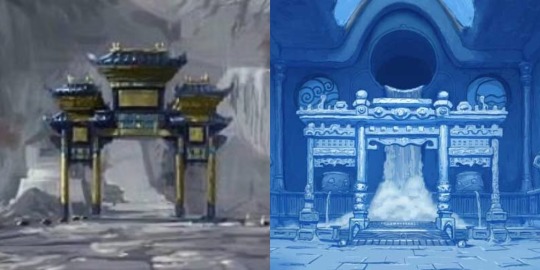
a traditionally chinese element that for some reason is exclusively found in the northern water tribe (why do they have a gate inside a throne room, you ask? ask the white people that made this show). the one on the left is actually one of two aang BUILT, at the main entrance and another at the temple entrance. this is just one example of water tribe design on the island.
2. the bagua mosaic

another structure is the bagua mosaic on the training grounds. bagua is a set of traditional chinese symbols of the cosmology, taoism. the bagua composes of 8 sets of broken or unbroken lines that represent yin and yang. where have we seen yin and yang in the original series? oh yeah, as tui and la of the water tribe! (because atla is a mess of asiatic and indigenous motifs joined together and spread out across each nation, mainly traditionally chinese elements at that.) aang building this right next to the air nomad training grounds is a symbol of the dual bending heritage their children will have.
3. gold and blue accents

now, gold and blue are the main colors of the exterior structures but is also very strong inside the air temple itself. note, the massive air nomad symbol designed fully in blue in the center and the blue banners and rugs throughout the temple. this is no doubt, for me, a visual depiction of both katara and aang’s representative cultures, but of course this is not limited to color only.
4. cloud carvings
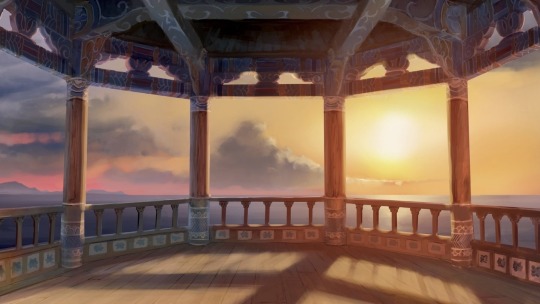
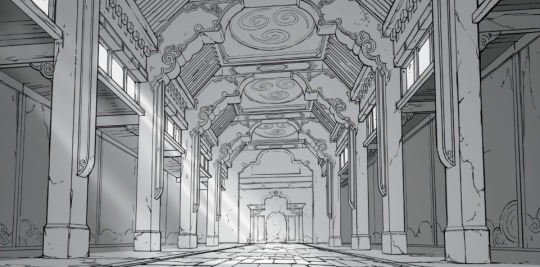
now, this is a slight detour since clouds aren’t a significant part of either of their individual cultures (that we know) but i love the kataang monopoly they have on clouds as a couple so i’m talking about it. if you look at these images very closely what do you see? CLOUD CARVINGS!! specifically near the ceiling of the pavilion (left) and the arches and walls of the temple (right) just imagining aang painting and etching these very consistent swirls, like he’ll never be the selfish inconsiderate unromantic loser you people want him to be, but let’s get more into the southern water tribe style interior.
5. interior design

so here is a southern water tribe white lotus outpost vs the air temple island main dining room. first thing, the seat cushions and rug! while we don’t see air nomad eating quarters we do get to see enough SWT customs both in atla and lok, to know this is how they traditionally eat compared to the north (limiting myself on pics cuz mobile).
another thing is the dining table itself. both have what i believe to be built in fire pits (i couldn’t actually tell for the air temple island one cuz of the quality but if you zoom in you can see the lines go in the table plus the hanging kettle on it makes it obvious to me idk). the southern water tribe one however is clear and likely a more traditional version of what aang and katara have.
thirdly, the exposed timber on the ceiling. i actually looked it up and found this is a common element of these two inuit structures: left is an aasiaat peat house and right is an igloolik turf house. all this for me to believe not only did aang build air temple island to be a haven for the TWO of them but also that katara herself had a lot of input on the interior than people care to notice lol.
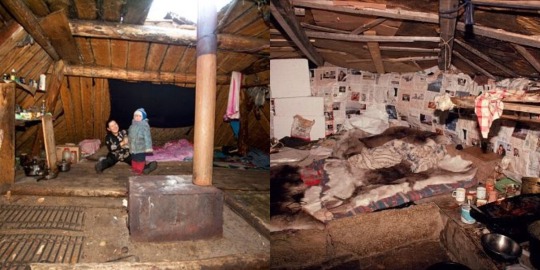
maybe instead of projecting these loser fantasies of katara being some unwilling air nomad baby making machine so you can feel better about your fantasies of katara living in a red palace with people that tried to wipe her out for a whole century, you all can go study the actual canon you were shown and the real life cultures the franchise takes from.
6. lastly, some of my own headcanons/stuff i want to see in the movie
the bathroom because I LIVE for a white marble tiled bathroom. i just know katara has to have a HUGE tub and they have one of those insane glass showers that can fit like 3 people, with cloud swirls everywhere because aang clearly got it like that
the KITCHEN, i imagine it being timber like the dining room and is probably on the other side behind the built-in shelf (get into the details like hello). in a perfect world, it would be open plan but hey
the bedroom, now we saw it in lok a bit but i wanna see it in the gaang movie too. i’m on pic limit but there’s a lot of artwork and flowers throughout the whole house which i give katara credit for because I can. like the desk, the bookshelf, that fancy looking vase thing? these two clearly have taste like don’t talk to me rn
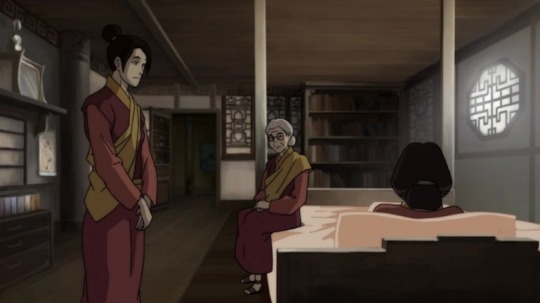
I also didn’t show the rooms and aang’s study but there’s a lot of blue decor in those places which makes me think katara decorated the whole house, even the acolytes’ hall has blue sitting cushions and columns which i think is such a nice detail.

if you guys have any air temple island headcanons of your own please reply with some i’m feening lol
big shoutout to this user:
atla-annotated (their page is so great and filled with a lot of incredible information if you guys like this sort of stuff)
#atla#kataang#anti anti kataang#anti anti aang#aang the builder#i’ll keep saying it#anti anti katara#anti zutara#enough of with these loser fantasies#i’m sorry kataang will never have that cold sad narrative y’all desperately want them to#they need their own architectural digest house tour at this point#katara interior decorator fic when??#i need the hgtv kataang fic too btw#my fic ideas#my headcanons#air temple island#lok#cloudfamily#water tribe#air temple
222 notes
·
View notes
Text





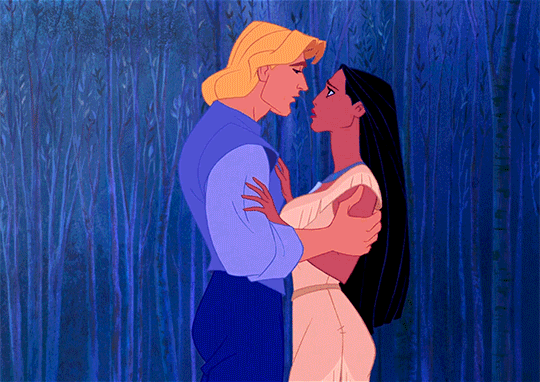
"...What is it?"
"The drums...they mean trouble. I shouldn't be here—"
"I want to see you again—"
"I can't—"
"Please don' t leave—"
"—I'm sorry."
"..."
"...I have to go now."
—Pocahontas (1995)
#tfw ur really connecting with a guy and the fucking air raid sirens go off#pocahontas (1995)#disneyedit#pocahontasedit#pocahontas x john smith#pocahontas#john smith#they were all feeling a kind of way at the studio huh?#but fr like her look of panic when she hears the drums always stuck with me as a kid#and only now am i realizing the reason those drums are probably a Big Deal is bc her tribe JUST got done fighting a war with another tribe#she's been hanging out with smith all day. she doesn't /know/ that a scouting party had been sent out and one of her own got shot#she was just tailing the one guy on her own and then having a whole musical number and flirting n having a good time#and all of a sudden the red alert is blaring and now she's having war flashbacks#literally those drums could be for anything as far as she knows. i'd be on edge too.#also this lil animation sequence is so interesting#it strikes me as very 'old hollywood' in the blocking and the body language#it's the 'oh but we mustn't!' of it all#ahhh i'm a sucker for it every time#queso*edit#queso*gifs
162 notes
·
View notes
Text
i was rewatching atla as usual and here's something i noticed.
the actual symbols of the 4 elements have their own differences symbolizing how each of the bendings work; water (freedom within the flow of the water), earth (complete control of freedom/discipline), air (full freedom) and fire (freedom within the fire flames)
the swirl, something that each one has, means the freedom of being able to bend, saying that even with their differences they are all connected and are the same.
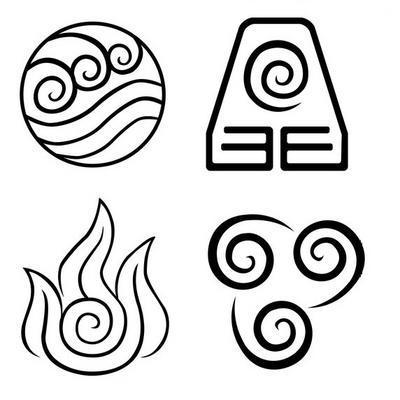
then we see the symbol that the fire nation uses since the war stared (this is just a guess idk if the fire nation used that symbol before the war, but it feels right to say they did not)
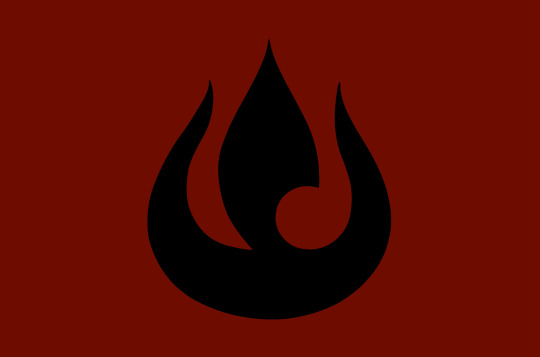

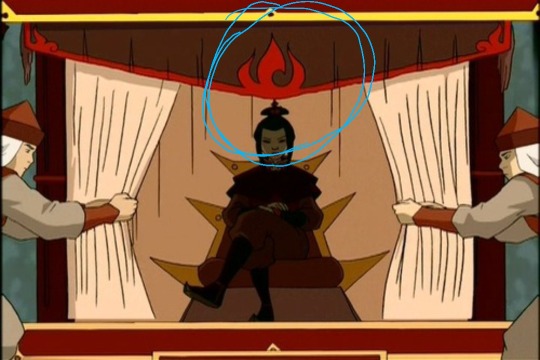
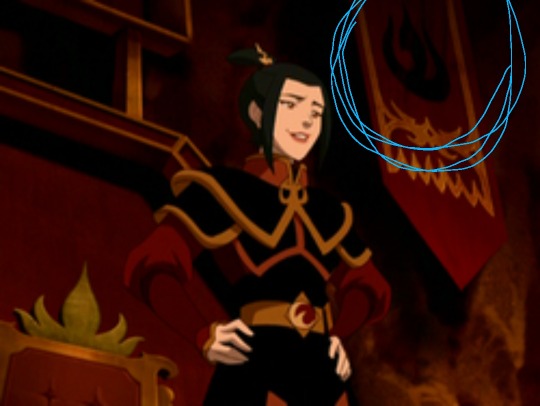
they don't use their element's symbol, they make their own bc they don't want the significance of their actual symbol.
it has no swirl, no freedom and also it differentiates itself from the other nations, not wanting to say that they all are the same. not only that but it's way neater, implying that the fire nation itself is neater or "better" than the rest of the nations.
there's also something really cool I noticed. when iroh teaches zuko fire bending and he's explaining the 4 elements, he uses the "real" fire symbol :)

idk if I'm making this up or if it's canon or if im missing something but i love worlbuilding and trying to find small details
#sorry if this is a mess#english is hard#not really but i dont like writing it#avatar the last airbender#atla#fire nation#air nomads#earth nation#water tribe#aang#zuko#katara#sokka#toph#iroh#worldbuilding
2K notes
·
View notes
Text

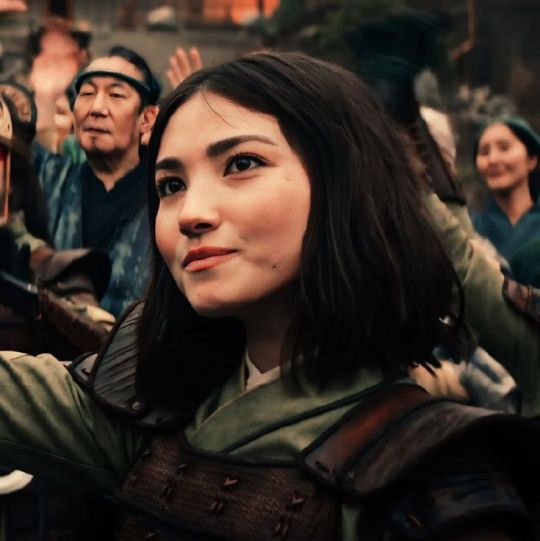

I am so in love, bro, it's not even funny!!! ( ꒦ິ ཀ ꒦ິ )
#suki avatar#atla suki#suki atla#atla#avatar the last airbender netflix#avatar the last airbender#atla live action#live action#in love#so pretty#atla netflix#netflix#the last airbender#earth nation#fire nation#water tribe#earth kingdom#air nomads
73 notes
·
View notes
Text
⚣ ATLA/LOK: The Four Nations & Homosexuality ☀️
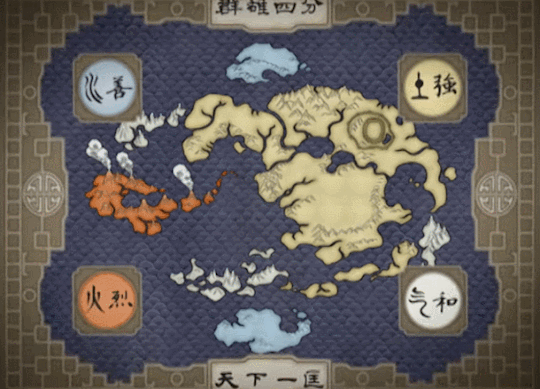
I'm planning to write for my favorite characters from the Avatar universe again. Any OGs from my first account know I started posting content about ATLA and LOK, specifically Bolin and Mako, WAAAY before I started posting DC and Marvel content among others.
So I wanted to talk about something I found really interesting about homosexuality within the four nations and their attitudes towards it regarding acceptance and whether they embraced or turned away from it. And since we are soon getting a new Earth Avatar series, we might as well start with the Earth Kingdom.
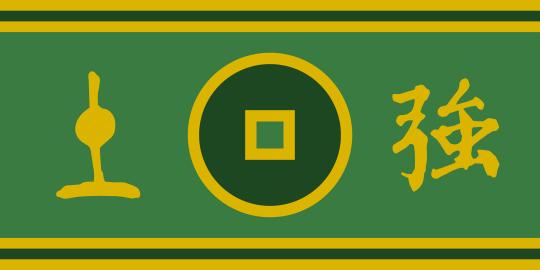
EARTH KINGDOM
First, let's consider the element of the nation itself and what it symbolizes.
Earth is not just the element of strength, but also the element of endurance and rigidity. In simple terms, it's a tough and stubborn element.
Also, Earth is a hybrid element, meaning it can be used in defensive and offensive manners easily.
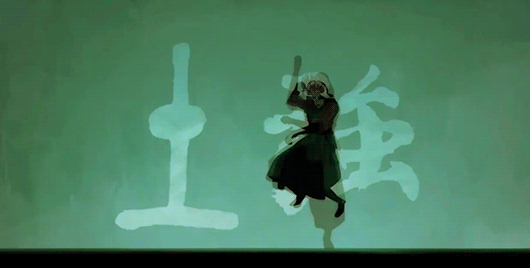
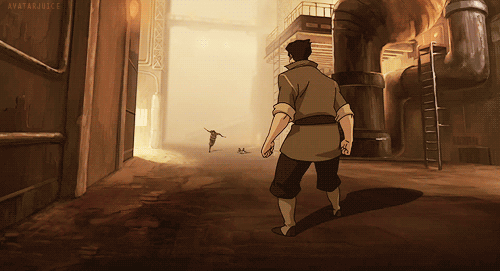
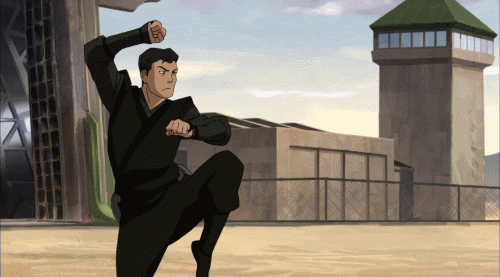

Concerning its nation, it can be shown how citizens of the Earth Kingdom would more than likely be very conservative and adverse to any change or diverting from societal standards in the norm.
They're stubborn and stuck in their ways, so they may not react the most positively to displays of affection between same-sex couples. But, it can work in both ways.
As mentioned, Earth-benders and citizens, in general, tend to be very stuck in their beliefs, meaning if one were to have a more liberal position on the matter of social and romantic relationships, they would be just as defensive and stubborn in that belief as someone more conservative and traditional.
This goes back to my saying that Earth itself is a hybrid element. A mix of defensive and offensive tactics. Just as much as people way attempt to push their beliefs onto others, they're just as quick to defend their beliefs and ideals.
I'd also argue region/location within the Earth Kingdom is a major factor. If we're talking places like small villages or cities like Omashu in the animated version, you may be met with pushback and intolerance. But, places like Kyoshi Island where its founder was a lesbian so likely had very liberal beliefs concerning such topics. Also Omashu from the live-action since that version portrays Oma & Shu as a lesbian couple, and even Ba Sing Se since big cities are proven to attract a more liberal-leaning population.
But, interestingly enough, in the comics, it's stated that the Earth Kingdom is the slowest to accept change, and their default is still heterosexuality. Obviously, this comes from the rigidness and stubbornness of the Earth element itself. So even if Ba Sing Se has a more 'liberal' or rather "diverse" crowd, doesn't mean that crowd is automatically open to homosexuality. Ideally, the only known place in the Earth Kingdom where you could experience the most acceptance and grace from others would be Kyoshi Island
In summary, on a scale of 1 to 10, 10 being the most accepting & embracing of homosexual relationships and 1 being the opposite, I originally was going to give the Earth Kingdom a 5, but remembering how it's stated in the comics that they are the slowest to accept change which checks out, they got bumped down to a 2.
It is a very big nation and thus has the potential to plant different seeds of belief and opinion, however, it's clear in the show how rigid and otherwise, unshakeable denizens of the Earth Kingdom can be. They have their beliefs, and they strongly stick to them.
Even with someone like Avatar Kyoshi who had to go and make a whole separate Island where she and her people could live in peace and prosperity without certain influences affecting them, they still have yet to come around to the idea that other people live with different interests and beliefs, and that there is truly no 'default' for even one person.
Acceptance Rating: 2/10

FIRE NATION
Starting with a focus on the element itself again, fire is the element of power, as described by Iroh. It can burn things in its path, but can also give life. In simple terms, it's an element of strong will and desire to expand and consume, literally and metaphorically.
Fire is also mainly an offensive element, with the capability of modifying certain offensive moves into defensive ones.
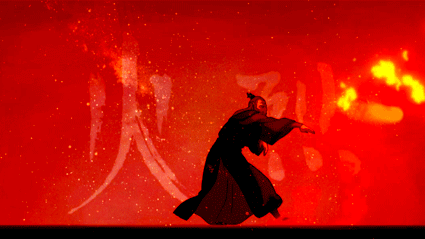
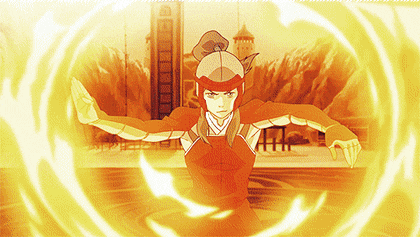


Its nation's citizens and benders heavily share these traits with their element. They tend to be willful and proud, and while that doesn't necessarily equal being close-minded, pride can very well lead to stubbornness.
This is evidenced strongly by the political government of the Fire Nation, with its monarchy power having complete and total influence and control over its citizen's lifestyles and choices. If one Fire Lord feels strongly about something and makes it into law, another Fire Lord can come two generations later and reverse and change it.
This is shown in the nation's history, where homosexuality was actually tolerated (I hate using that word) in the Fire Nation for a long time before Fire Daddy, ahem, I mean Fire Lord Sozin's rule. It was during his reign as Fire Lord that Sozin outlawed same-sex relationships and marriages among the Fire Nation and its citizens.
Some speculate it was due to the clear pressure he faced being the sole heir to the throne since his sister was born a non-bender, something that was frowned upon in the royal family. A potential heir to the Fire throne had to be a firebender, with no exceptions. Therefore, Princess Zeisan was allowed more freedom and control in her life than he was, as evidenced by her embracing Air Nomad culture and being confirmed as a lesbian.
It was common knowledge that Sozin and Zeisan had a very antagonistic and tense relationship with each other, despite them being siblings. They were pitted against each other from a young age which caused a rivalry between them. So, it's completely possible to speculate that Sozin implemented the law to spite his sister who fell in love with Sister Rioshon, an Air Nun.
it's also completely possible to theorize that Sozin harbored homosexual tendencies and feelings himself, especially towards his best friend, Roku we all know was the Fire Avatar before Aang. Again, his being a royal prince and next in line for the throne threw a wrench in this since Sozin was expected to marry a woman and produce an heir. So his potential feelings for his best friend could never be explored due to his duties and responsibilities to his nation.
So since Sozin couldn't have what or who he truly wanted, no one could, and thus, same-sex love and marriage were banned. And that didn't change no matter where you went in the nation unlike the Earth Kingdom where you could go from village to village and city to city and the rules would be completely different depending on where you were.
Again, fire is the element of power and will. And if it was the will of the Fire Lord to ban same-sex relationships in the nation entirely, then everyone had to fall in line. Meaning the door was opened for more conservative and traditionalist views to be voiced in opposition to same-sex relationships.
While some may have had differing beliefs and ideals, they more than likely had to keep it to themselves, especially among the nobility. This can lead to harboring feelings of anger and resentment, rather than love and acceptance, causing people to react harshly to any displays of such affection and behavior, just like Sozin.
As I said, fire as an element itself is primarily offensive in nature. Reflecting on its people, and especially its governing body, this is clearly shown by the notion that one person's opinion and belief can be pushed onto everyone around him if he or she so decrees it.
With that, the Fire Nation gets a 3/10 on the scale. Again, in the past, they were at minimum tolerant of it. which is not much if we're being honest. Tolerant actually is kind of insulting. But, after Sozin's rule, that tolerance more than likely dwindled and hasn't improved much following his reign as far as we know.
I'd like to think that Zuko as the Fire Lord, having seen much of the world and all its different dimensions and lifestyles people have lived, he'd at some point in his reign reverse the ruling, but that's a far-fetched hope knowing these writers and creators (no shade...mostly).
Acceptance Rating: 3/10

AIR NOMADS
Air is the element of freedom. It's flexible and lacks restriction, moving in any direction it desires. And because of its lack of constraint, it becomes easily adaptable in any scenario, whether it's evasion, offense, defense, etc.
However, the element of air is primarily and almost purely used as a defensive and evasive practice among its population, due to its nation as a whole choosing to live as pacifists. But, do not be misled. As mentioned, air as an element can be just as powerful offensively as it is defense-wise.



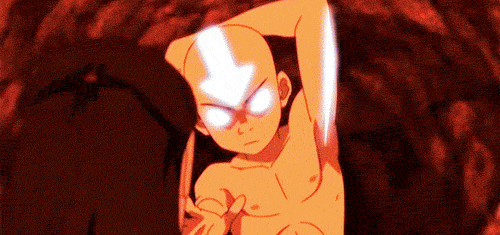
Just as their element, the benders of the Air Temples were very open and flexible people. As monks and nomads, they chose to forego many earthly and physical connections, seeking spiritual enlightenment. Because of this, there were never any non-benders in the Air Nomads.
Any child born from an Airbender was an Airbender themselves. Also, due to their style of life and spirituality, they were very adaptive to any situation they were placed in, making them very open to any and all change around them.
While they lived by the teachings of the monks and masters of the Air Nomads, they lived freely and openly, just like their element. The most restriction they had was as children or masters/monks that lived at the temples, males and females were not allowed to live together in the same space.
I'm not sure if this applies to temples as a whole as I've seen conflicting information. Some say the rule applies to temples as a whole, which would mean the Northern and Southern Temples were only inhabited by male Airbenders, and the respecting Eastern and Western temples were inhabited by female Airbenders.
But, I do remember a specific scene from Avatar, during the 2nd season when Appa was lost, and he had a memory of when he was a baby bison, and he and Aang met for the first time. I remember the monk facilitating this was a female Airbender, so that's why I'm not exactly sure what is concrete.
But, it does make sense as in many of Aang's flashbacks to his time at the Southern Air Temple, we mainly only ever saw male Airbenders. Thus, many have speculated that this specific rule would inadvertently encourage exploration and curiosity for these young Airbenders regarding their sexuality as they matured and eventually left the temples as adults and master Airbenders.
Also, on this, no child from the Air Temples was raised by their parents. They were only raised by the monks, enforcing that common belief and practice they all had. While they of course had their own identities, they were all taught the same thing from an early age, if an Adult Airbender met and had a child with someone from a different nation, that child likely being an Airbender would be sent to the Air temples to be raised by the monks.
All that to say, Airbenders would be the exact opposite of conservative. They technically wouldn't even be liberal since, again, they detach themselves from earthly limitations in favor of a higher spirituality.
So, since they don't subscribe to earthly practices or beliefs, they would be the most accepting nation of homosexuality and same-sex relationships. It's not in their nature or belief to judge others either so they wouldn't show any hostility or intolerance to LGBTQ+ people and relationships.
Just like their element, they practice freedom and adaptability to the world around them. And just as air is primarily used in defensive manners, they still will defend their beliefs and practices, they just avoid direct confrontation, preferring evasive maneuvers.
Just a quick note, the Air Nomads are what I like to think of as the example of how this world should have been. I read another column that detailed how the creators of the show ultimately created institutionalized homophobia because they couldn't imagine a world without it, and that's in large part due to the heavy influence of Western, colonial, Christian, and to be quite frank, European imperialism on the show's writing.
It's a fact that's becoming increasingly more well-known. Before European and Christian colonization/imperialism, many cultures and communities were not just accepting of same-sex relationships and LGBTQ+ identities, they embraced it! While there were definitely pedophilic relationships that were wrong and grotesque no matter what time period it was, same-sex relationships were just as normal as opposite-sex ones. There was no "default."
So in simple terms, the Air Nomads accept and embrace everyone, no matter who they are or how they live. As long as they don’t wrong and harm others, and even then, they see everyone as equal and deserving of respect and love. And that's what our society should be based on. Of course, they were killed off in an entire genocide, which, say what you will and think what you think, but the one culture that accepts and loves everyone as they are being killed off...ironic, don't ya think?
Acceptance Rating: 10/10
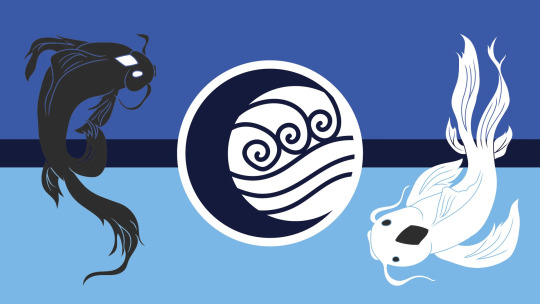
WATER TRIBES
Finally, water is the element of change. Like air, it adapts to its circumstances, but more fluidly and gracefully. Yet, unlike air, it relies on the flow of energy, turning its defense into an offense and back. In whatever scenario that sees fit, a Waterbender can change their liquid offense into a solid defense, or turn a solid offense into a gas defense.
This clearly makes the water an element suitable for either an offensive or defensive strategy. Its unique ability to change its form to fit its circumstances gives its user an extreme advantage in combat or any other risky scenario.
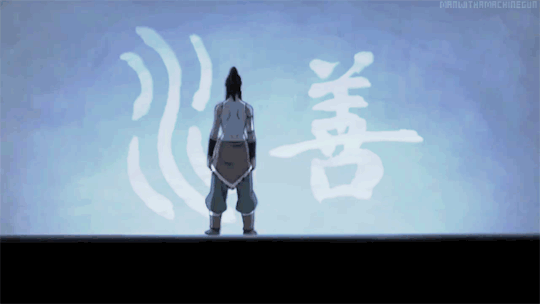
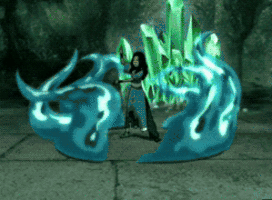
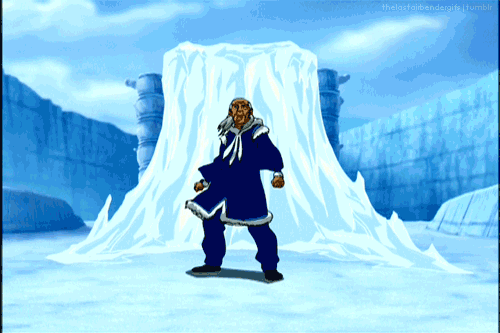
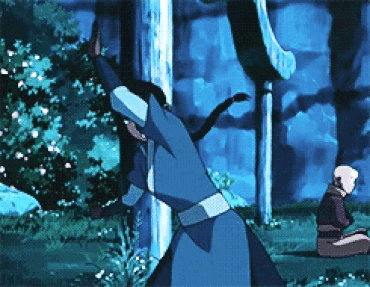
Now, even with this in mind, ironically enough, the people of the Water Tribe are not the most in sync with their element as far as when it comes to living standards.
While yes, in combat, they adapt and adjust accordingly to their needs and goals in the fight, in regular practice, they're more conservative and less open to change than you would initially believe.
Also, as confirmed in the LOK comics, while the Water Tribes are not openly homophobic, they are still lacking in accepting and embracing the concept that there is not one rule that applies to all when it comes to who they love. Which, when you think about it, checks out.
The Northern Tribe operated heavily off a patriarchal society as we saw in the first season, and it took Paku nearly getting his ass whooped by a teenage girl who was the grand-daughter of the woman he loved but refused to wed since it was arranged for them to start to change their ways. Even if the Southern Tribe was a bit ahead of their Northern counterpart in this sense, they still suffered from the restricting roles they placed on themselves concerning gender.
Giving props to Fire Nation and Air Nomads, they never had restrictive rules on who could fight in battle, even if the Nomads as mentioned tended to avoid conflict. However, the Earth Kingdom and Water Tribes both practiced and thus, were limited by their rules that men were only allowed to serve in the army and in the guard.
Of course, we've already discussed the Earth Kingdom is the slowest to accept change, but for the Water Tribes, this is a bit unnatural, and if this is how they act regarding gender, it says a lot about how they would react when it comes to same-sex relationships.
So, it's understandable why Kya advises Korra and Asami to keep their relationship to themselves. But, I personally don't believe they should. Creating change means people are going to be uncomfortable. Oh well, boo-hoo, they'll get over it.
But, this does at least check out with the hybrid offense/defense nature of water bending. People of the Water Tribe will stand their ground and defend what they choose to believe in and love. And while they may not openly go out of their way to push their beliefs onto others like those in the Fire Nation, it doesn't mean they don't still have ways have doing so. Like water, I imagine their approach to such a subject can vary.
With that, Water Tribes get a 2.5/10. They're ahead of the Earth Kingdom in the sense that they've realized excluding women from fighting hurts them more than it helps them. Also, it's highly plausible that if a woman can learn how to fight, a man can learn how to heal, but I digress. However, they're still lower than the Fire Nation since this is less of a government-forced ideology and more of a societal norm they place on themselves.
Acceptance Rating: 2.5/10
I like doing analysis like this. If anyone thinks of other topics to discuss and do a deep dive into, send it in my asks!
#solar-wing ☀️#☀️🪽.random#☀️🪽.avatarposts#☀️🪽.analysis#☀️🪽.txt#lesbian#gay#bisexual#transgender#lgbt#non binary#avatar the last airbender#legend of korra#atla#lok#water tribe#earth kingdom#fire nation#air nomads#male x male#female x female#mlm#wlw#bxb#gxg#fanfiction
77 notes
·
View notes
Text

#funny#funny content#memes#meme#best memes#funnymemes#humor#dark humor#dankest memes#anime memes#avatar memes#avatar funny#avatar the way of water#avatar the last airbender#fire nation#water tribe#air nomads#earth bender#avatar#copy paste
882 notes
·
View notes
Text
the atla universe if languages existed
hey there! ever wondered what avatar would be like if the nations actually spoke different languages? me too! here's my idea of how it would go:
(set during avatar: the last airbender, might add more during korra times another day)
quick disclaimer: i am an american who speaks american english and conversational france french. all of my language knowledge comes from youtube or school. this is just a silly little headcanon i needed to write down.
WATER
Within the water tribe’s language system, there are two main languages: Northern Water and Southern Water. Northern Water is spoken by the Northern Water tribe and Southern Water is spoken by the Southern Water tribe. Despite having similar names, the two languages are very different. When the Water tribes lived as one on the water lionturtle, they all spoke the same language (which we will call Olde Water), but after separation, they evolved independently. Think of the relationships between the two water languages as the relationship between French and Spanish. Their words can be similar (sol/soleil, luna/lune) because they share roots from Latin (or in this case, Olde Water). Northern Water and Southern Water share roots to the point where a Southern speaker and a Northern speaker would not be able to understand each other but could probably pick out a few key words from their speech. Similar words are things that are native to their area, while less common things that did not exist/were unknown during Olde Water times have differing words (the word for “polarbear-dog” is probably similar in both languages, but the word for “badgermole” is probably different). If the tribes met often for peace/community reasons (perhaps annually), then both languages would contain loanwords from the other tribe. For example, if sea prunes are a Southern Water tribe staple, then the word for “sea prunes” in the North is probably the same as it is in the South. Neither language has any sort of written component- it is completely oral.
Another, more niche language also exists within the Water language family, and that is Foggy Swamp. This language also originates from Olde Water, but has a great amount of Earth influence, since the swamp itself is in the Earth Kingdom (influence specifically from Omashu). Someone who speaks Olde Water would understand Foggy Swamp to the extent that someone who speaks American English would understand Pidgin English (that is, they would have to focus intently and would be able to get the jist of their speech). A Northern Water or Southern Water speaker would not be able to understand them at all, since their languages have developed so drastically from Olde Water. However, one could trace roots of words in Foggy Swamp back to Northern or Southern Water. An Earth speaker would not understand them at all either, but would be able to trace back loanwords and modern terminology (the word for “swamp” or “cat-gator”, for example, would be a lot more similar to Earth than it would be to Northern Water or Southern Water). Foggy Swamp also does not have a writing system.
EARTH
Because it covers such a vast space, the people of the Earth kingdom used to be incredibly linguistically diverse, with almost every city speaking differently than the next. During Kyoshi’s reign, Chin the Conqueror took over most of the kingdom and standardized the writing system (similar to the Qin dynasty in China), and therefore heavily influenced spoken language in the Earth kingdom. As an after-effect, Common Earth, also known as simply Earth, is the most widely spoken language in the world, to a similar extent as English or Mandarin Chinese. It is taught as a second language in every nation and it is hard to find a city where there are no Earth speakers. Everyone in the Earth kingdom speaks or understands Earth. Omashu Earth is an accent that is spoken primarily in the city of Omashu, and has tonal differences from Earth, similar to the difference between New York English and standard American English. Aside from Omashu Earth, the other areas of the Earth kingdom that were taken over by Chin do not have distinct accents. There are some slight variances, especially in the Southern islands between the Air temples, but all speakers of Common Earth can understand each other perfectly. Common Earth has a stable writing system that does not vary.
Despite Chin’s attempt to standardize language within the Earth kingdom, the places he did not conquer held fast to their respective languages. Ba Sing Se Earth, which can also be called Upper Ba Sing Se Earth, is the language that differs the most from Common Earth due to Ba Sing Se’s impenetrable walls cutting them off from the rest of the kingdom. Since both languages are derived from Olde Earth, they share similar writing systems, but neither language can understand each other (similar to the relationship between Cantonese and Mandarin). The walls between the Upper and Lower ring also created Lower Ba Sing Se Earth, where grammar is more simplified, due to the hasty lifestyle of a lower-class worker. Both Upper and Lower Ba Sing Se Earth speakers can understand each other, but Upper Ba Sing Se speakers might not be able to understand Lower slang. Their writing system is exactly the same. Kyoshi Earth is spoken solely on Kyoshi island, and is very similar to the former language of the people of Yokoya. It is not understandable to any other Earth speakers and functions similarly to the relationship between Japanese and Mandarin Chinese, with a different yet similar alphabet to Common Earth. The Si Wong tribes, who inhabit the Si Wong desert, speak various independent languages, but are collectively known as Si Wong Earth. Their languages have many loanwords from Common Earth due to trade. Their written language is syllabic and simple, similar to Cuneiform.
FIRE
Most of the Fire nation speaks the same language, but there are three main dialects within the Fire Nation language system. The most commonly spoken dialect is aptly named Fire, but is also known as Common Fire. This language is spoken within the Fire nation capital, Caldera, but is mainly used within the greater land mass of the Fire nation. It evolved from Olde Fire and is the most basic form of Fire nation speech. The most similar dialect is more of an accent with some different slang terms and is known as High Fire. It is spoken by the citizens of Caldera, especially the nobles. It is completely understandable to those who know Common Fire and vice versa. The relationship between the two languages is similar to the relationship between Canadian French and Quebecois. The main difference between High Fire and Common fire is pronunciation of words and tonal patterns within sentences and phrases. The last dialects all get looped into one group and are collectively known as Provincial Fire. Provincial Fire is spoken on the outskirts of the mainland and into the chain of islands off of the Fire nation. It varies greatly depending on what island or area of the mainland it is spoken in and has differences from Common Fire that are similar to Korean’s differences from its provincial dialects (speech pattern and tones, different slang terms). The further out one gets from Caldera, the stronger the dialect. Written language within the Fire nation is the same across all of the dialects and characters are similar to Mandarin Chinese as they are pictorial and syllabic (from canon).
The Sun Warriors are the only ethnic group of the Fire nation that speaks anything other than Common Fire. The Sun Warriors speak Sun Fire, which originates from Olde Fire as well, but has changed greatly since it was spoken within such a small group of people. Someone who speaks Common Fire would not understand Sun Fire at all, but could probably pick out a few words that have similar roots to Common Fire. Sun Fire has two written languages- one is reserved for spiritual leaders and spiritual texts, while the other is used by all people. Visually, it is similar to the differences between Japanese’s Kanji and Kana writing systems, where one is more simplified and one is more traditional. Spiritual written Sun Fire is more similar to written Common Fire.
AIR
The people of the Air nation only have one language: Air. Due to a high need of proper communication, as well as people constantly moving from temple to temple, or growing up at one and working at the other, Air nomads developed only a single language from Olde Air. Air nomads have a robust writing system to allow writing of incredibly complex ideas and air nomad journeys. Most nomads learn multiple other languages as they age, so they can succeed no matter where they find themselves in the world. Due to the destruction of the Air temples, Air is almost a completely lost language. Remaining speakers include Aang and his children, as well as a few Earth kingdom elders who learned the language from friends and passed it down to their children.
MISC.
Cities born out of the 100-year war, like Cranefish Town (Republic City), are another story. The Fire nation mandated that all colonies only speak Common Fire in hopes of destroying the culture of the city, but despite that, a hybrid language developed: Earthen Fire. To a non-speaker, Earthen Fire sounds like Common Fire, but the grammar structure is very Earth based (a Fire speaker can understand Earthen Fire in the way that a Dutch speaker can understand Afrikaans). It also incorporates many loanwords from Earth. The writing system involves the exact same characters as written Earth, so it almost sounds like Fire spoken with an Earth accent.
#atla#avatar#i hope someone actually reads this rant#avatar the last airbender#aang#sokka#katara#zuko#toph#suki#fire nation#water tribe#air nomads#earth kingdom#air temple#the legend of korra#tlok#korra#languages#etymology#polyglot#langblr#linguistics#worldbuilding#headcanon#atla headcanons#avatar headcanons#mega.exe#avatar languages#atla languages
326 notes
·
View notes
Text
Something I want to say about the new live action Avatar that makes it more heart-breaking than the original - Aang didn't run away. He only left to go clear his head, like one might do with a late night drive. He had ALL intentions of returning and accepting his responsibility, he just needed time to process this earth-shattering news as anyone would. He was 12. He was a kid. But he didn't run away, he was just taking a breather. He never abandoned ANYONE, yet everyone still believes he did, and what's more heartbreaking is he doesn't try to explain himself to anyone. He just accepts and takes their hate, and that is heart-breaking to me.
#avatar the last airbender#aang#katara#zuko#air nomads#fire nation#sokka#toph#atla#water tribe#earth kingdom
78 notes
·
View notes
Text
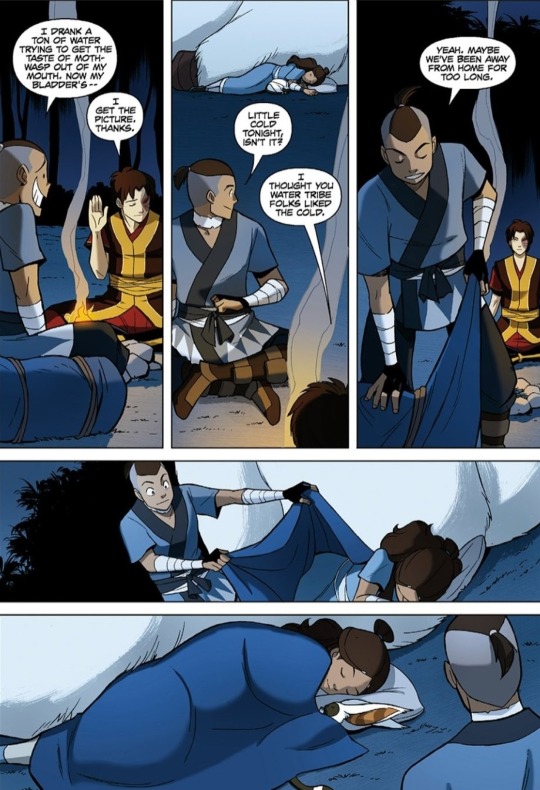
As an only child I'm crying🫡
#avatar the last airbender#atla#atla netflix#natla#aang#katara#sokka#toph#atla suki#zuko#mai atla#ty lee#azula#uncle iroh#kataang#zutara#maiko#water tribe#earth kingdom#fire nation#air nomads#aesthetic#icons#netflix atla
2K notes
·
View notes
Note
I apologize if you’ve already done a post on this. Please link me to it if you have. I’m very interested in how the names from each of the 4 nations (except maybe the earth kingdom) use very similar sounds. In the water tribe you see a lot of K’s. The fire nation has Z’s and R’s. The air nomads seem to have a lot of A’s. Obviously the names themselves have meanings but I’m curious if there’s any purpose behind the names having similar phonetics and letters.
In the case of the Water Tribe, it's a reference to how prominent voiceless velar plosives, otherwise known as "kuh" sounds, are in Inuit languages. I have a post listing Inuit dictionaries here. A quick peak into any of these dictionaries will reveal quite a few "k"s:
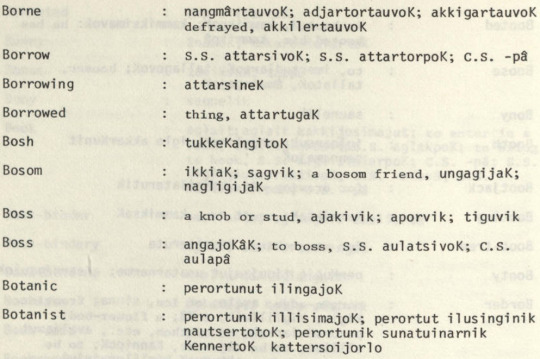
Similarly, most Air Nomad names are Tibetan in origin and Tibetan names have a lot of rounded "a" sounds.
@mostly-mundane-atla also has a funny post about how the Z came to be a staple sound of Fire Nation names.
On a more serious note, climate and geography affect what sounds are more common to a language. For example, "Kuh" sounds are very common in languages that developed in high altitudes, Inuit included. According to babbel.com, the theory goes:
...these sounds are easier to produce up high because at an altitude where there’s already less air pressure, it makes sense to communicate with compressed sounds that are easier to produce with the thinner air.
Additionally, ejective phonemes [k sounds] require us to emit less water vapor when they’re uttered compared to other kinds of sounds. Losing too much water vapor at high altitudes can lead to dehydration and altitude sickness, so this linguistic feature may also be a biological adaptation that helps people survive in these climates.
I doubt the ATLA writers were thinking that deeply about which sounds would be more common in each nation's names--- they were simply drawing from their real life inspiration--- but it's a fun factor to consider when worldbuilding a fantasy culture.
188 notes
·
View notes
Text
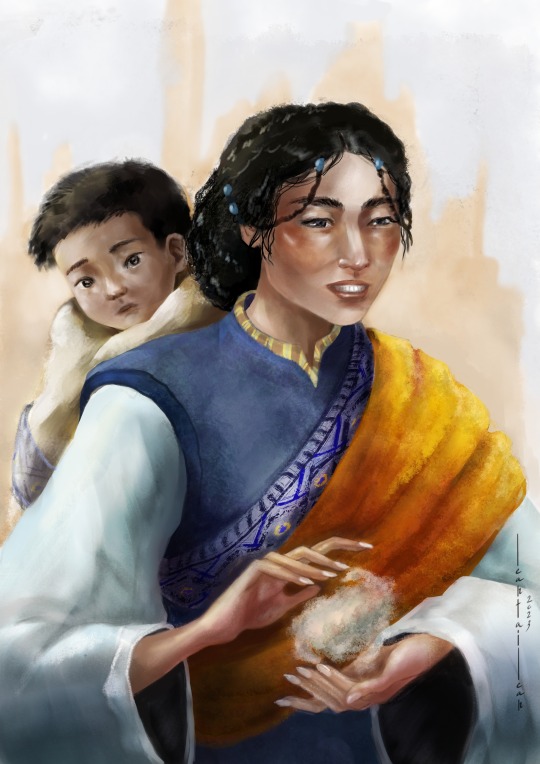
Master Katara of the Southern Water Tribe 🌊
____________________
See more of my art here: leantailean_art
Follow me on Twitter: @Alesha_Dima
#katara#avatar the last airbender#pro katara#master katara#katara fanart#katara atla#Avatar the last airbender#atla#atla fanart#atla katara#bumi ii#avatarverse#Bumi#waterbending#water tribe#air nomads#digital portrait#digital drawing#digital painting#digital art#my art#leantailean art
607 notes
·
View notes